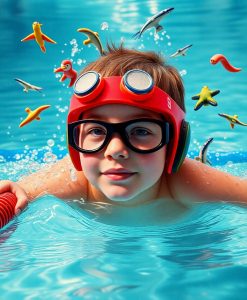For parents of children with autism, the sight of a small child floating gently in a pool can evoke a mix of hope and deep concern. You notice the way their tiny body tenses or relaxes, how they reach out for stability, searching for that familiar sense of safety amid water. These moments are more than just lessons in swimming—they’re potential lifelines, especially when water becomes an unpredictable and dangerous environment for children with autism.
Living with autism often involves navigating sensory sensitivities and communication challenges that can make water safety a complex issue. For many children, the sensation of water, the unpredictable movements, or even simple tasks like floating can be overwhelming. Yet, specialized swim classes designed for kids with autism are transforming these hurdles into opportunities for real safety and confidence.
If you’re a parent or caregiver trying to understand how swimming lessons could be more than just a fun activity, it’s worth recognizing their profound potential to be lifesaving. These classes go beyond teaching strokes—they foster trust, improve comfort around water, and develop crucial skills that can prevent tragedy.
Why Swimming Lessons for Children With Autism Are More Than Just Water Play
Many families discover that children with autism are at a higher risk of drowning, partly because of difficulties in swimming or understanding water safety. Regular swim classes tailored to their needs are not only about learning to swim—they’re about survival. When children with autism are guided through water safety skills in a controlled, sensory-friendly environment, they gain a sense of mastery over water, which can dramatically reduce drowning risks.
The unique approach in these classes often involves one-on-one or small-group instruction, where instructors are trained to recognize and adapt to sensory sensitivities and communication styles. For example, some children may need extra time to acclimate to the water, or gentle, rhythmic cues to feel secure. Having a dedicated instructor holding a card or using visual supports can make a child’s experience more predictable and less stressful.
The impact extends beyond physical safety. These classes help children develop body awareness, coordination, and confidence—skills that ripple into everyday life. When a child learns to float or kick with support, they gain a sense of independence and control. For parents, watching a child who once hesitated at the pool now confidently splash and float can be a moment of profound relief and joy.
Furthermore, swimming offers sensory regulation benefits. For children with autism, water can be soothing or overstimulating, depending on the approach. When guided carefully, water becomes a place where children learn to manage their sensory experiences, reducing anxiety and fostering emotional resilience.
How to Find the Right Swim Program for Your Child
If you’re considering swim classes for a child with autism, look for programs that emphasize safety, patience, and individualized support. Many specialized programs are designed to meet children where they are—whether they’re just beginning to get comfortable with water or working on specific safety skills like floating or treading water.

It’s important to ask about instructor training—are they experienced in working with children on the autism spectrum? Do they incorporate visual supports or sensory accommodations? Is the environment adapted to prevent sensory overload? These questions can help ensure that swimming lessons are a positive, safe experience.
Parents and caregivers also benefit from observing how children respond to the water, and communicating openly with instructors about your child’s unique needs. Building a partnership with the swim instructor can turn these lessons into a vital safety tool and a source of joy.
In the end, swim classes for children with autism are more than just a way to learn strokes—they are a potential lifesaver. They help equip children with essential skills, bolster confidence, and provide families with peace of mind. Water safety is a critical concern, and through tailored instruction, we can turn swimming from a danger into a safeguard.
Learn More: Swim Classes for Kids With Autism Can Be Lifesaving
Abstract: In an airy indoor pool with fish cutouts on the walls, a group of small children bobbed, floated and tentatively flutter-kicked. It was what it looked like, a starter swimming class. But here, instructors worked one-on-one or even two to a child. Some held cards to help kids…
Link: Read Full Article (External Site)

